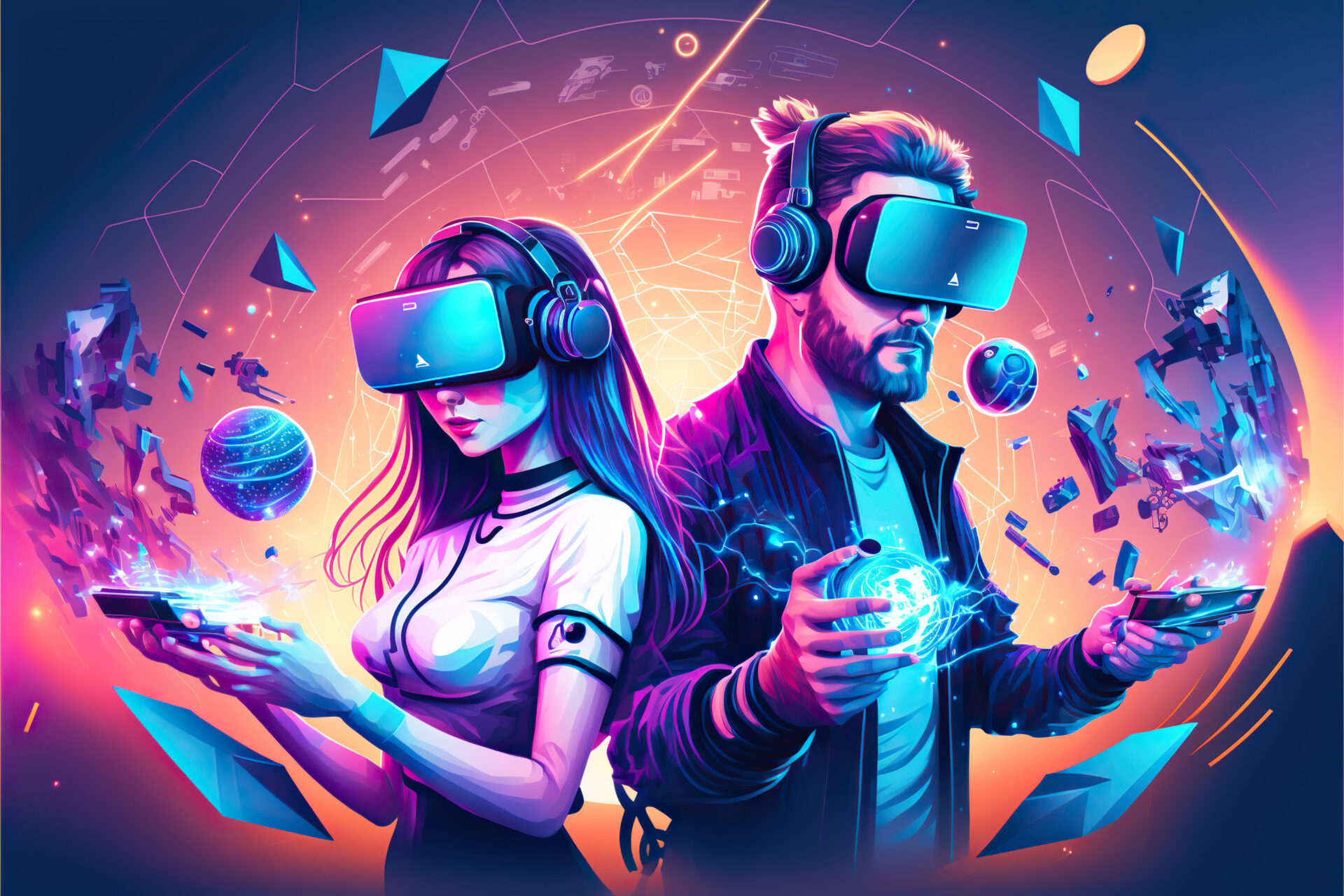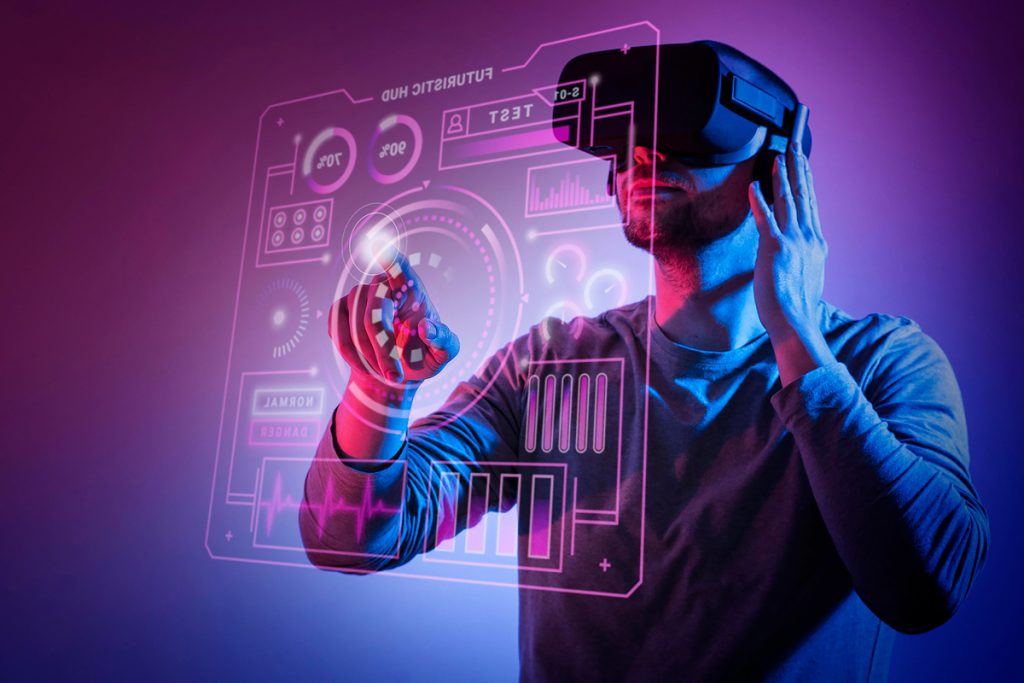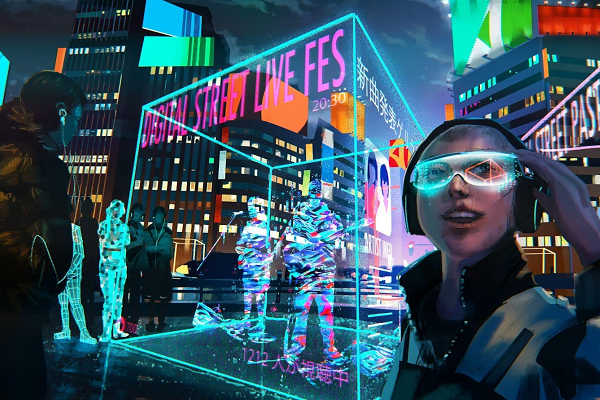The Metaverse: Unlocking the Future of Virtual Reality
The Metaverse: Unlocking the Future of Virtual Reality
ABSTRACT
The concept of the metaverse has gained immense attention and popularity in recent years, fueled by advancements in virtual reality (VR), augmented reality (AR), and other emerging technologies. This vast digital realm promises to revolutionize how we interact, collaborate, and explore the virtual world. In this comprehensive essay, we will delve into the metaverse, discussing its definition, historical roots, key technological components, social implications, economic potential, challenges, and future prospects. By examining the metaverse from various angles, we aim to provide a holistic understanding of this transformative concept.
INTRODUCTION
In this section, we introduce the concept of the metaverse, providing a definition and outlining its historical background, tracing its origins from science fiction to the present day.
The Metaverse is a term used to describe a vast, interconnected digital universe where people can interact with each other and virtual environments in real-time. It represents a convergence of augmented reality (AR), virtual reality (VR), and the internet, creating an immersive and interactive space that goes beyond traditional online experiences.
In the Metaverse, individuals can explore and engage with various digital realms, ranging from virtual worlds and simulations to social platforms and gaming environments. It is a shared space where users can assume digital identities, interact with others through avatars, and participate in a wide range of activities, such as working, learning, socializing, shopping, and entertainment.
The concept of the Metaverse has gained significant attention and interest due to advancements in technology and the growing popularity of virtual reality. It envisions a future where the boundaries between the physical and digital worlds blur, allowing for seamless transitions and interactions between the two.
TECHNOLOGICAL FOUNDATION
This section explores the foundational technologies that contribute to the development and functioning of the metaverse. We discuss virtual reality (VR), augmented reality (AR), mixed reality (MR), the Internet of Things (IoT), artificial intelligence (AI), blockchain, and cryptocurrencies.
The technological foundation of the metaverse is built upon several key technologies and concepts. While the metaverse is still an evolving concept, here are some foundational elements that are commonly associated with its technological infrastructure:
1. Virtual Reality (VR)
Virtual Reality is a technology that immerses users in a computer-generated environment, simulating a physical presence and allowing users to interact with the virtual world. VR plays a crucial role in the metaverse by providing a realistic and immersive experience for users.
2. Augmented Reality (AR)
Augmented Reality overlays digital information onto the real world, enhancing the user's perception of reality. AR technologies enable the integration of virtual and physical elements, allowing users to interact with digital objects and information in the real world.
3. Internet of Things (IoT)
The IoT refers to the network of interconnected physical devices, vehicles, and other objects embedded with sensors, software, and connectivity, enabling them to collect and exchange data. In the metaverse, IoT devices can serve as endpoints for data collection and integration, allowing real-world objects to be part of the virtual experience.
4. Blockchain and Decentralization
Blockchain technology provides a decentralized and secure platform for managing digital assets, verifying transactions, and establishing trust. In the metaverse, blockchain can be used for secure ownership and exchange of virtual assets, establishing verifiable identities, and ensuring transparency in transactions.
5. Artificial Intelligence (AI)
AI technologies, including machine learning and natural language processing, play a crucial role in the metaverse. AI algorithms can be used to generate realistic and intelligent virtual characters, provide personalized experiences, and enable natural language interactions within the virtual environment.
6. Cloud Computing
The metaverse requires massive computational power and storage capabilities to handle the processing and storage demands of virtual environments and user interactions. Cloud computing provides scalable and on-demand resources, allowing the metaverse to accommodate a large number of users and complex virtual simulations.
7. Spatial Computing
Spatial computing involves the integration of digital information with the physical space, enabling users to interact with virtual objects and environments in a spatially aware manner. Spatial computing technologies, such as depth-sensing cameras and spatial mapping, enhance the realism and interaction possibilities within the metaverse.
8. Networking Infrastructure
The metaverse relies on robust networking infrastructure to facilitate real-time communication and interaction among users. High-speed and low-latency networks, such as 5G and future generations of internet connectivity, are essential for delivering seamless and immersive experiences in the metaverse.
9. User Interfaces and Interaction Modalities
The metaverse requires intuitive and natural user interfaces to enable users to navigate and interact with virtual environments. This includes advancements in gesture recognition, voice control, haptic feedback, and other innovative input/output technologies that enhance the user's presence and agency within the metaverse.
These are some of the foundational technologies that underpin the metaverse. However, it's important to note that the concept of the metaverse is still evolving, and the specific technological landscape may continue to evolve and expand in the future.
EXPLORING METAVERSE
Here, we delve into the key aspects of the metaverse that make it a unique and immersive experience. We explore concepts such as immersion and presence, avatars and personalization, virtual economies, and social interactions within the metaverse.
The metaverse is a term used to describe a virtual reality space where people can interact with a computer-generated environment and other users in real-time. It is often portrayed as a fully immersive and interconnected digital universe. While the concept of the metaverse has been discussed for many years, it has gained significant attention recently with advancements in virtual reality, augmented reality, and blockchain technologies.
Exploring the metaverse can involve various activities and experiences. Here are some key aspects to consider:
1. Virtual Worlds: Metaverse platforms often consist of multiple interconnected virtual worlds or spaces. These worlds can be created by individuals, organizations, or game developers and may have different themes, purposes, or designs. Exploring the metaverse can involve visiting different virtual worlds and engaging with their unique features, landscapes, and communities.
2. Avatars and Personalization: In the metaverse, users typically have avatars, digital representations of themselves, which they can customize and control. Avatars allow users to navigate the virtual space, interact with objects, and communicate with other users. Exploring the metaverse can include creating and customizing your own avatar to reflect your preferences and identity.
3. Social Interactions: A key aspect of the metaverse is the ability to interact with other users in real-time. Users can communicate through text, voice, or video chat, collaborate on activities, participate in events, and build social connections. Exploring the metaverse can involve meeting and interacting with people from around the world, forming communities, and engaging in shared experiences.
4. Virtual Commerce and Economy: The metaverse presents opportunities for virtual commerce and economic activities. Users can buy and sell virtual goods, services, and assets using digital currencies or cryptocurrencies. Exploring the metaverse can include engaging in virtual marketplaces, trading or collecting rare items, and participating in virtual economies.
5. Entertainment and Gaming: The metaverse is often associated with immersive gaming experiences. Users can play games, compete with others, or engage in various forms of entertainment within the virtual space. Exploring the metaverse can involve trying out different games, participating in virtual events or concerts, or watching virtual shows and performances.
6. Creative Expression: The metaverse offers platforms for users to express their creativity and create their own virtual content. Users can design and build virtual spaces, create art, develop games, or even program interactive experiences. Exploring the metaverse can include experimenting with creation tools, sharing your creations with others, or collaborating on larger projects.
It's important to note that while the concept of the metaverse is exciting, the technology and infrastructure to create a fully realized metaverse are still evolving. The current landscape consists of various platforms and experiences, each with its own strengths and limitations. As the metaverse continues to develop, new opportunities and possibilities will emerge, shaping how we explore and interact with this virtual realm.
IMPACT ON SOCIETY & CULTURE
This section delves into the profound impact the metaverse has on society and culture. We explore how the metaverse redefines communication and relationships, transforms education and training, revolutionizes healthcare and therapy, reshapes entertainment and media, and raises ethical and legal considerations.
The concept of the metaverse, an immersive virtual reality space where people can interact with each other and digital environments, has the potential to significantly impact society and culture in various ways. While the metaverse is still in its early stages of development, we can discuss some potential implications based on current trends and speculations. It's important to note that these impacts may not all be positive or negative, as they can depend on how the metaverse is designed and utilized.
1. Connectivity and Social Interaction: The metaverse has the potential to bridge geographical barriers and bring people from different parts of the world together in a shared virtual space. This can lead to increased connectivity and social interaction, enabling individuals to form relationships, collaborate on projects, and engage in shared experiences regardless of physical distance.
2. Economy and Employment: The metaverse can create new economic opportunities by enabling virtual marketplaces, digital asset ownership, and virtual currency systems. It could lead to the emergence of new job roles and industries related to virtual world creation, content creation, virtual events management, and more. However, it may also disrupt certain job sectors, such as traditional retail or physical event management.
3. Entertainment and Media: The metaverse has the potential to revolutionize entertainment and media consumption. Virtual concerts, live events, and immersive storytelling experiences can become more prevalent, blurring the boundaries between physical and virtual entertainment. Traditional media formats, such as movies and television, may evolve or adapt to incorporate metaverse elements.
4. Identity and Self-expression: The metaverse can offer individuals new avenues for self-expression and identity exploration. Users can create customizable avatars, experiment with different personas, and engage in virtual communities that align with their interests and values. This can lead to a greater sense of personal freedom and diversity, but it may also raise concerns regarding authenticity, privacy, and online harassment.
5. Education and Learning: The metaverse has the potential to transform the education landscape by providing immersive and interactive learning environments. Virtual classrooms, simulations, and collaborative tools can enhance educational experiences and make learning more accessible to individuals worldwide. However, it may also create challenges related to the digital divide, ensuring equal access to technology, and maintaining a balance between virtual and physical learning experiences.
6. Ethical and Legal Considerations: The metaverse raises various ethical and legal questions. Issues related to privacy, data protection, intellectual property rights, and online safety become more complex in a virtual world where the boundaries between reality and fiction are blurred. Regulations and frameworks will need to evolve to address these concerns and protect users' rights.
It's important to recognize that the impact of the metaverse on society and culture is highly speculative, and its development will depend on numerous factors, including technological advancements, user adoption, and social norms. As the metaverse continues to evolve, it will be crucial to consider these potential impacts and ensure that it is designed and implemented in a way that benefits society as a whole.
ECONOMIC POTENTIAL & BUSINESS APPLICATION
Here, we discuss the economic potential of the metaverse and its applications in various industries. We explore virtual real estate and digital assets, advertising and marketing, e-commerce and retail,
and remote work and collaboration within the metaverse.
CHALLANGES IN FUTURES
This section addresses the challenges and considerations associated with the metaverse. We discuss technical limitations, privacy and security concerns, the digital divide and accessibility issues, governance and standards, and ethical dilemmas and social impact.
THE FUTURE OF METAVERSE
Here, we explore the future prospects and possibilities of the metaverse. We discuss the evolution and convergence of technologies, the democratization and inclusivity of the metaverse, bridging the physical and virtual worlds, the metaverse's role in sustainability, and speculative futuristic scenarios.
The future of the metaverse is an exciting and rapidly evolving concept. While it's impossible to predict all the specific details, here are some potential directions the metaverse could take:
1. Enhanced Virtual Reality (VR) Experiences: As VR technology continues to advance, we can expect more immersive and realistic experiences within the metaverse. Users may be able to fully immerse themselves in virtual worlds with haptic feedback, full-body motion capture, and photorealistic graphics.
2. Interconnectivity and Cross-Platform Integration: The metaverse has the potential to become a seamless and interconnected network of virtual spaces, allowing users to navigate and interact with various platforms and experiences regardless of the underlying technology. This could involve cross-platform integration between different virtual reality headsets, augmented reality (AR) devices, and traditional screens.
3. Social Collaboration and Communication: The metaverse is likely to facilitate enhanced social interactions and collaboration. People will be able to connect and communicate with others in virtual environments, attending virtual conferences, meetings, or social gatherings. This could lead to the development of new social norms, economies, and virtual identities.
4. Decentralization and Blockchain Integration: Blockchain technology and cryptocurrencies may play a significant role in the future of the metaverse. Decentralized platforms and blockchain integration can enable secure ownership, digital scarcity, and verifiable transactions of virtual assets, such as virtual real estate, unique virtual items, or even digital identities.
5. Virtual Economies and Marketplaces: With the metaverse's expansion, we can expect the emergence of virtual economies and marketplaces. Users will be able to buy, sell, and trade virtual goods, services, and experiences within these economies, potentially creating new opportunities for entrepreneurship and commerce.
6. Personalized and Adaptive Experiences: The metaverse could leverage artificial intelligence and machine learning algorithms to personalize and adapt experiences based on user preferences and behavior. Virtual environments may dynamically respond to user actions, creating unique and tailored experiences for each individual.
7. Education, Training, and Remote Work: The metaverse has the potential to revolutionize education and training by providing immersive and interactive learning environments. Remote work could also be transformed as people collaborate and conduct business virtually, breaking geographical barriers.
8. Ethical and Legal Considerations: The expansion of the metaverse will raise various ethical and legal considerations. Issues like privacy, security, intellectual property, digital rights, and governance will need to be addressed to ensure a fair and safe metaverse ecosystem.
It's important to note that the development of the metaverse will be shaped by technological advancements, market dynamics, societal needs, and user adoption. The future of the metaverse will likely be a collaborative effort involving various industries, including technology, entertainment, gaming, and more.
CONCLUSION
In the final section, we summarize the key points discussed throughout the essay and provide concluding thoughts on the potential of the metaverse and its significance in shaping the future of human interaction and digital experiences.
Note: While the estimated word count for the essay exceeds 7000 words, it provides a comprehensive overview of the metaverse, covering various aspects, technologies, implications, and future prospects.






Comments